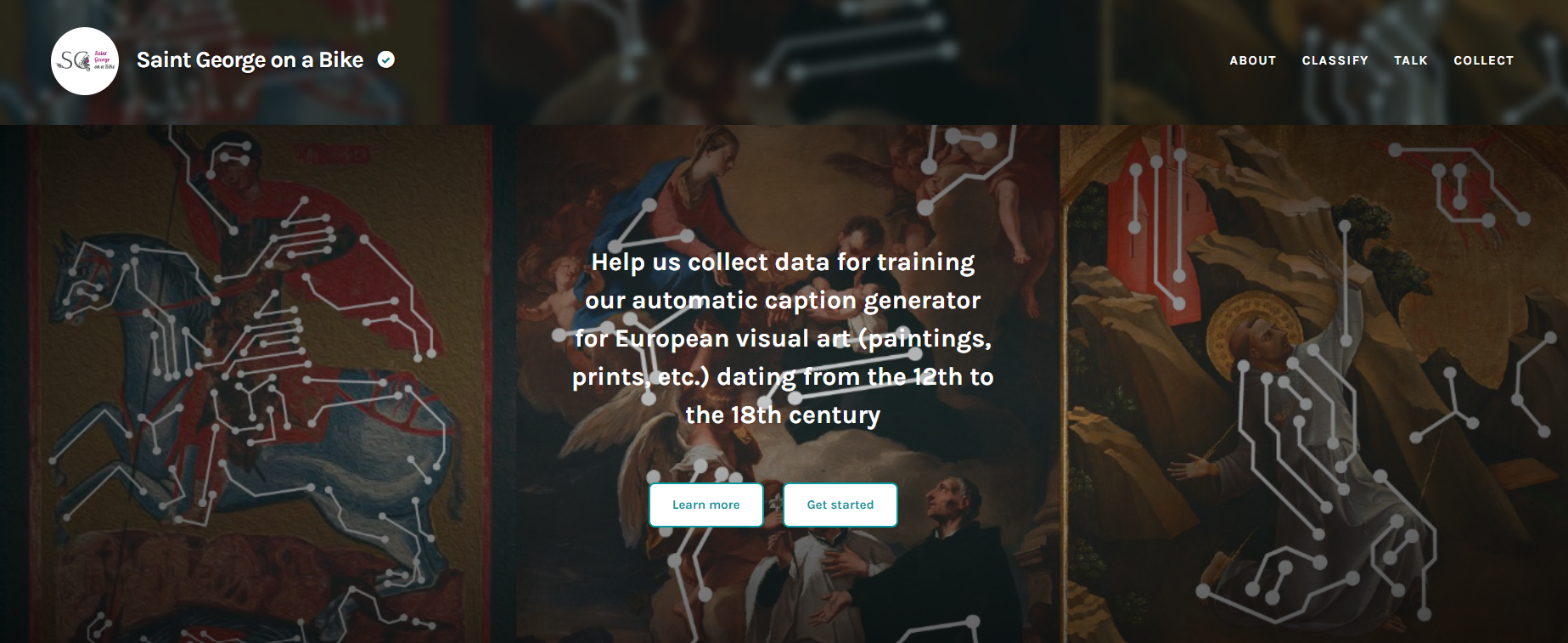Standing out from the crowd: tips on how to make your crowdsourcing campaign successful
What if someone invited you to join a research team to explore the surface of Mars, look at the clouds in the sky, or help find new antibiotics? What if you had to travel back in time to look inside paintings to understand the thoughts and intentions of religious painters in the medieval ages?
Zooniverse might just be the perfect platform for this. Starting as a crowdsourced astronomy project which invited people to assist in the morphological classification of large numbers of galaxies, Zooniverse is now home to some of the Internet’s largest, most popular and most successful citizen science projects. More than 1.6 million volunteers help research teams from all around the world to find data-driven solutions to different problems.
The Saint George on a Bike (SGoaB) team decided to join the community and share their DEArt (Dataset of European Art) with volunteers. Their main purpose was to collect annotations of the digitalised images. This data is extremely useful and in high demand for the cultural heritage community. Using it, the SGoaB team can build AI systems which will finally be able to understand art and describe unseen paintings. It brings communication between users and GLAM sites to a new level. Since the campaign launched, more than 1,000 volunteers made approximately 20,000 annotations of paintings from different sources. Using only the resources of the research team, it would take around a year.
Here are a few suggestions the SGoaB team would like to share with teams who plan to launch crowdsourcing campaigns:
- Be aware that it takes a lot of time and effort. Normally campaigns contain several stages such as preparation, beta-testing, launching and moderation. For each stage, the research team should assign a certain amount of person-hours. Otherwise, the campaign will not be able to attract enough volunteers to fulfill the task. Our experience shows that preparation and launching a campaign can take four to six weeks. It looks like a big amount of time, but it includes preparing, beta-testing, collecting feedback, fixing and polishing the final version. All these steps are essential for a good crowdsourcing project.
- The quality of text and image materials for the campaign should be your top priority. Administrators of Zooniverse give some tips like:
The title of your project should be short and punchy; your tagline should try to “hook” volunteers. Use your static pages (Research, FAQs, etc.) to explain your project clearly and resolve the most common questions about it.
Visual examples of what you are asking volunteers to look for are extremely important to have in addition to text descriptions. Consider offering a variety of examples of “correctly” classified data to educate volunteers. - Keep in mind that you will need a PR strategy to attract volunteers to your campaign. It can include newsletters and press releases, posts on social media and domain-focused resources, colleagues’ encouragement, etc. We would suggest talking with your PR department for strategy development and implementation. For example, we contacted local and international press in order to help us disseminate our campaign. There was an uptick of annotations immediately after this press campaign was launched.
- You have to keep your campaign alive. After the launch, a lot of volunteers will ask questions and suggest improvements. Someone has to react to it and communicate with users. It is a key point of the success of any crowdsourcing activity. Normally it takes 30 minutes to an hour a day to answer comments and check daily statistics.
- Encouragement of volunteers is also part of this work. It can be in a form of private personal messages or certificates of participation. Discussions and forums are also a good way to keep the campaign alive. Our personal experience shows that volunteers are very motivated if the project is interesting and has great value to the scientific community. What we did was we wrote personal messages to volunteers who made a significant effort to help the project and send them certificates of participation. Taking into account that some universities can accept volunteer work as credits for some courses, certificates of participation can be a very good motivation.
The Saint George on a Bike team has one core message to our community and like-minded projects:
There is only one thing which we would suggest avoiding: FEAR. Don’t be afraid to start your campaign and soon you will see results. It takes a lot of time, resources and energy but the results are worth it. Good luck and see you on Zooniverse!
Learn more about the Saint George on a Bike crowdsourcing campaign on Zooniverse and clock the button below.
